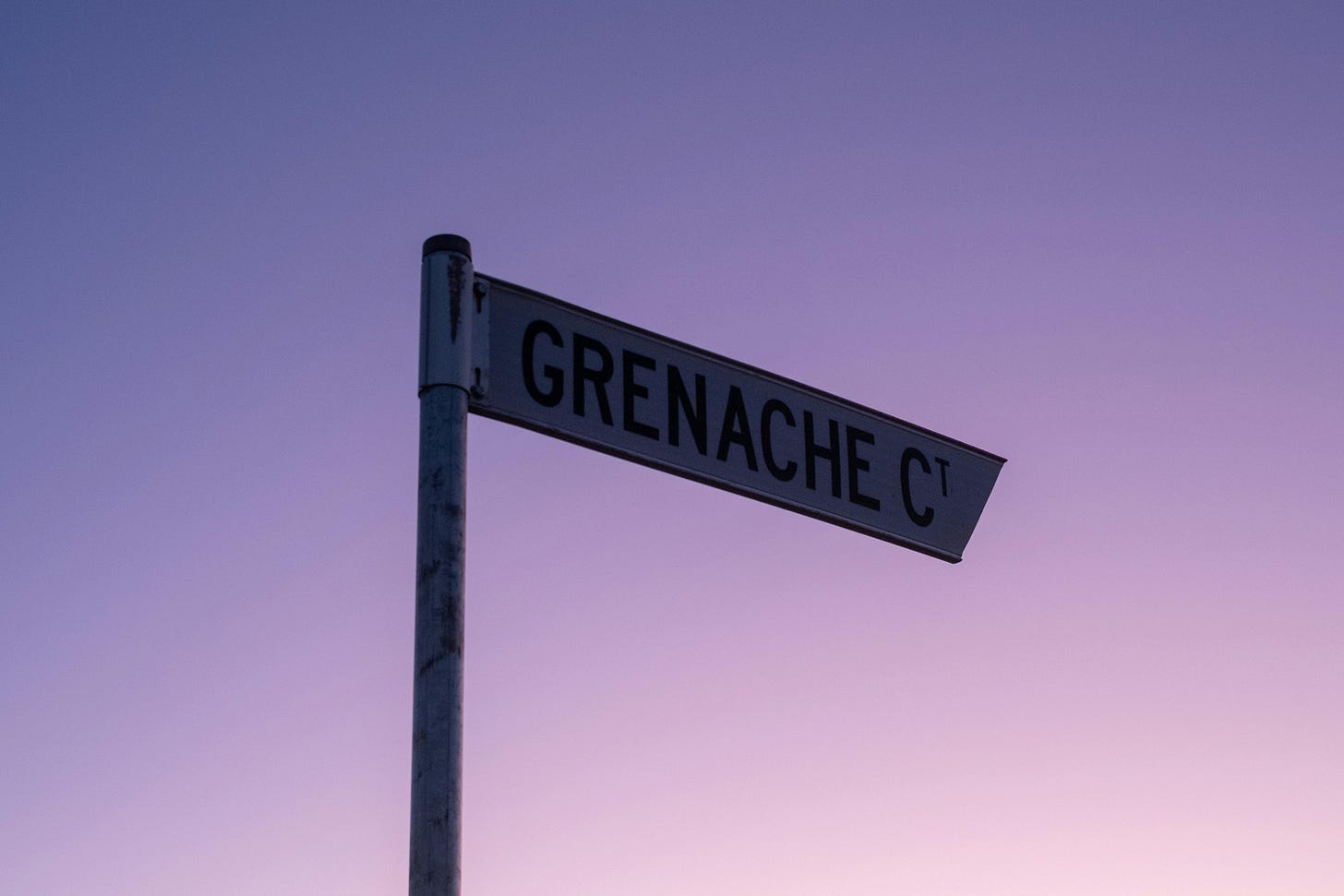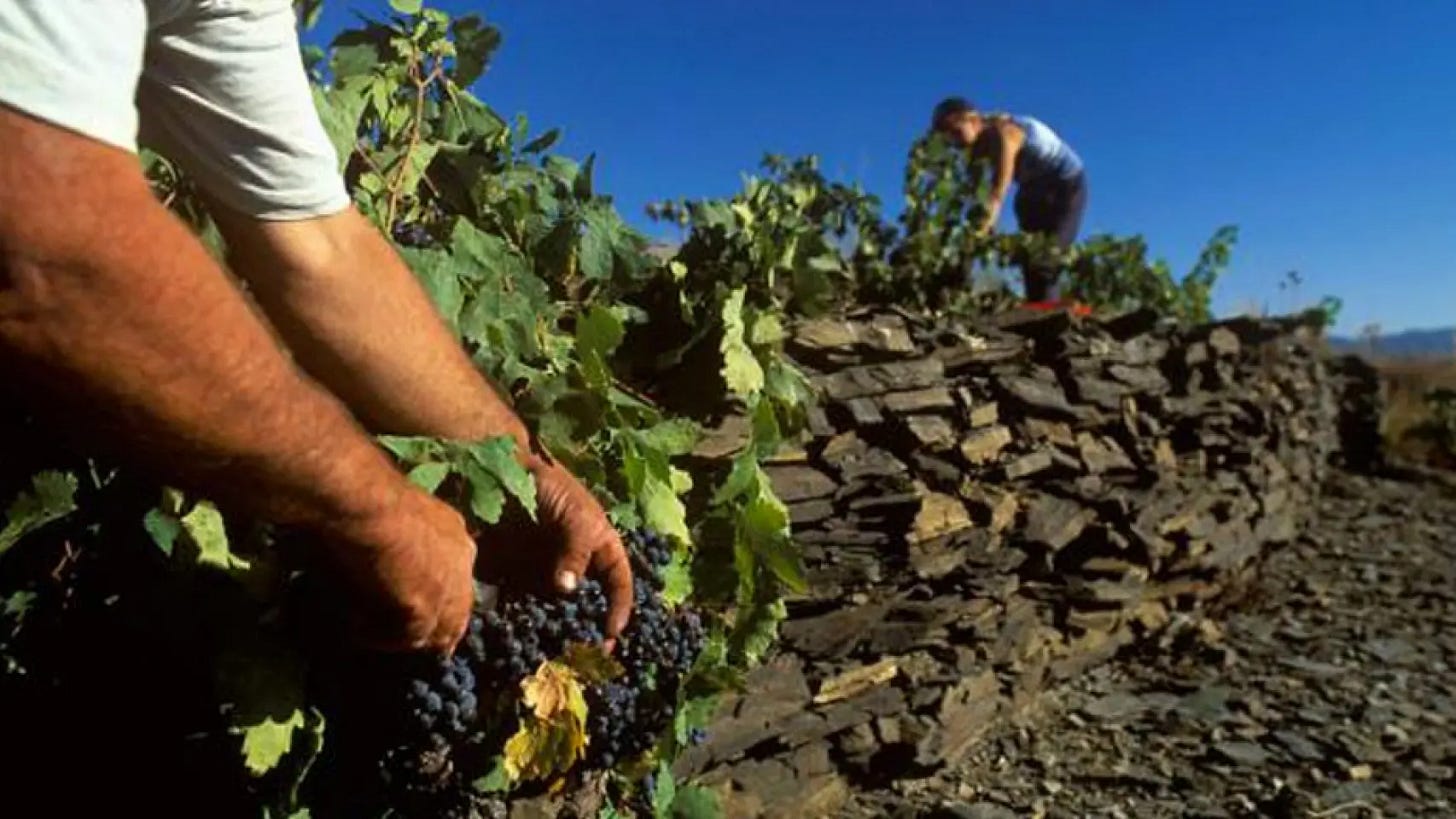
Happy “International Grenache Day” you incessant goose chasers.
Can you believe it’s finally here?? If you’ve “been with us” for a while, you’ve probably heard us utter some disparaging remarks about this innocent little grape. We tend to find it a little simple (LIKE US), excessively ripe and/or jammy, with gobs of red fruit and “plenty” of alcohol.
Our palates lean in favor of structured and complex reds, and though “Grenache” (called “Garnacha” in Spain) can unquestionably yield wines of this sort, the best examples often cost more “bones” than we care to “cough up” — BUT THAT DOESN’T MEAN IT’S NOT WORTH CELEBRATING (at least once a year).
So what is “International Grenache Day” and why does it “exist?”
Philosophers have lost their minds trying to answer that “age old” question. Luckily, with the help of “modern science,” we’ve managed to cobble together an answer:
“International Grenache Day” is an “annual celebration” made up by some “folks” at the “Grenache Association” and/or “Grenache Symposium” (YOU PICK!) — the former of which has a dubious website and a whopping 1 “employee” (according to Linkedin), and the latter of which has a website entirely in Japanese about becoming an emergency nurse. So needless to say, we have “no further questions” (AND NEITHER DO YOU) so let’s talk about a place that makes some of the best wines Grenache has ever “graced” with its presence…
PRIORAT
High up in the rugged little hills inland from so-called “Tarragona,” Priorat is a Spanish wine region where vineyard work is very much “defined” by hand labor and elbow grease (THE GOOD KIND!). The terrain is steep, the vines are trained as low bush plants, and mechanization is “largely” impossible which means every cluster picked and every vine tended comes from “backbreaking” effort. High labor costs translate to higher wine costs, but with great labor comes better wine.
Much like life itself, the climate is punishing. Long, hot, dry summers with little annual rainfall make Priorat a “thirsty place” — but thanks to the help of our little pal “llicorella” (red slate shot through with glittering mica) soil water retention is “robust” and stored heat radiates back at the vines in the eve, helping Garnacha and Cariñena (both late ripening varieties) reach full maturity. Old vines, rooted deep in these nutrient-poor (LIKE ME!) soils, yield tiny harvests that translate into intensity in the glass. The result is a goodly signature style: deeply colored reds with firm tannins, concentrated black fruit, elevated alcohol (THE GOOD KIND), and layered complexity, often “polished” by new French oak. This carves a humble niche for Priorat on the spectrum of Grenache-based wines.
While Garnacha and Cariñena form the heart of the blends, Cabernet Sauvignon and other international grapes occasionally “add their voice” to the equation — but it is the manual work, the magical little soils, and the resilience of the vines (AND WONDERFUL PEOPLE) that define Priorat’s mortal soul.
Priorat. Good stuff.
TLDR
Priorat’s vineyards are steep, terraced, and rocky. The soils are llicorella slate, which splinters underfoot and can make hoofing around treacherous.
Old bush-trained vines sprawl low to the ground, so picking requires bending and stooping in the intense “Mediterranean sun.”
Tiny yields from grumpy old vines mean growers do a lot of work for relatively little fruit, further driving up the labor intensity (and cost).
… AND NOW FOR THE REVIEWS (IN ORDER OF PRICE):
[CLICK HERE FOR A BREAKDOWN OF HOW OUR 100PT RATING SYSTEM WORKS]
2021 Coster Del Olivers Priorat / $32
Profile: Red cherry, strawberry, plum, blackberry, “sheep farm (??),” earth, violets, dried herbs, chocolate
Palate: Dry, medium+ tannin, medium+ acid, long finishBlend: Garnacha, Cariñena, Cabernet Sauvignon
A more “rustic” and earthy “expression” of Priorat than I’ve had in my limited “prior” experiences with this “esteemed category.” Nevertheless, a solid old world style Garnacha / Cariñena driven blend. That being said, you can find much better “options” at this price point.
(NOTE: Wine Searcher link above shows it being sold for significantly cheaper than the $32 I paid for it)
Score Breakdown: Balance 35 / Aroma/Flavor 16 / Concentration 14 / Length 15 / Complexity 8 = 88 Points (Z)
2020 Clos Bartolome Priorat / $36
Profile: Ripe black plum, cherry, dates, wet chalk, white pepper, leather, thyme
Palate: Dry, Medium+ tannin, medium+ acid, full body, long finishSmashing “value” Priorat (within the category) - a 50/50 blend of Garnacha and Cariñena (carignan). What struck me immediately was a strong note of wet chalk alongside the fresh, ripe black and red fruits on the nose. On the palate it showed some complexity with herbs and leather and some spice. Well integrated tannins and high alcohol for an unfortified red (15.5%) but surprisingly well balanced in spite of that. Very concentrated and a long long finish. I recommend drinking within a day of opening as this oxidized more quickly than I would have expected, but on day one it was really strong.
Score Breakdown: Balance 36 / Aroma/Flavor 17 / Concentration 15 / Length 15 / Complexity 7 = 90 Points (I)
Wow, what a reputable and important day for all of us!
Let’s all take a moment to say “thanks” to the Grenache Association - were it not for their “work” in the “field,” who knows where we’d be today.
Now get out there and “celebrate responsibly” with a case or two of “the good stuff.”
Until next time, HAPPY DRINKING PEOPLE.
Cheers!
Isaac & Zach







